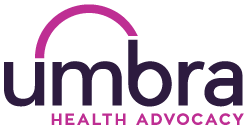Health Insurance Is Hard. Here’s What You Need To Know.

Every year, health insurance open enrollment rolls around and you get the chance to switch health plans. Open enrollment is often the only time during the year that you can change your plan, unless you have a major life event or change.
Open enrollment dates vary by type of insurance coverage:
- If you buy insurance on the Health Insurance Marketplace (Healthcare.gov), open enrollment starts on November 1. How long you have depends on where you live.
- If you’re on Medicare, open enrollment is between October 15 and December 7.
- If you get health insurance through a job, open enrollment is based on the employer’s schedule but often lines up with the end of the calendar year.
No matter how you get your health insurance, you’ll get more out of it if you understand the basics. Survey after survey show that most Americans don’t understand the most common health insurance terms. And it matters. Research suggests that people who don’t understand health insurance tend to make worse health insurance and healthcare decisions.
Health Insurance 101
Don’t make health insurance decisions without knowing the basics. Here are 10 key terms you should know:
- Premium – The set fee you pay each month for your health insurance. If your job provides health benefits, your employer pays part of the total premium.
- Copayment – The set fee you pay each time you use healthcare services, fill a prescription, or visit a healthcare provider.
- Deductible – The amount you must pay out-of-pocket before health insurance coverage kicks in. Until you meet the deductible, you pay 100% of the cost of covered services. After you meet your deductible, you still may have other costs (e.g., copayments or coinsurance until you reach the out-of-pocket maximum).
- Coinsurance – A percentage of the cost of healthcare services that you must pay until you reach the out-of-pocket maximum.
- Out-of-pocket maximum – The cap on the total you’ll have to pay yourself for healthcare services in a given year. Once you meet the cap, your health insurance plan should cover 100% of covered services you get from in-network providers.
- Provider network – The group of healthcare providers that agrees to participate in your health plan.
- In-network providers – Healthcare providers who agree to work with your health plan and to accept reimbursement from the plan for services they provide to plan members.
- Out-of-network providers – Healthcare providers who are not contracted with your health plan to provide services to health plan members. Depending on the plan, you may be able to see out-of-network providers if you pay more to see them, but some plans offer no out-of-network coverage at all.
- Open enrollment – The period when you can switch plans for any reason. Outside of open enrollment, you may be able to switch plans if you have a major life event or change in circumstances.
- Special enrollment period – A time when you can switch health plans outside of open enrollment if you’ve had a major life change, called a qualifying event. Qualifying events may include getting married, moving, losing a job with coverage, having a child, or getting divorced.
If you need help choosing health insurance or want an expert to review your benefits to see if you’re on the right plan for you, find an expert insurance advocate in the Umbra Health Advocacy Directory or hire Umbra to match you with an expert from our national network.
